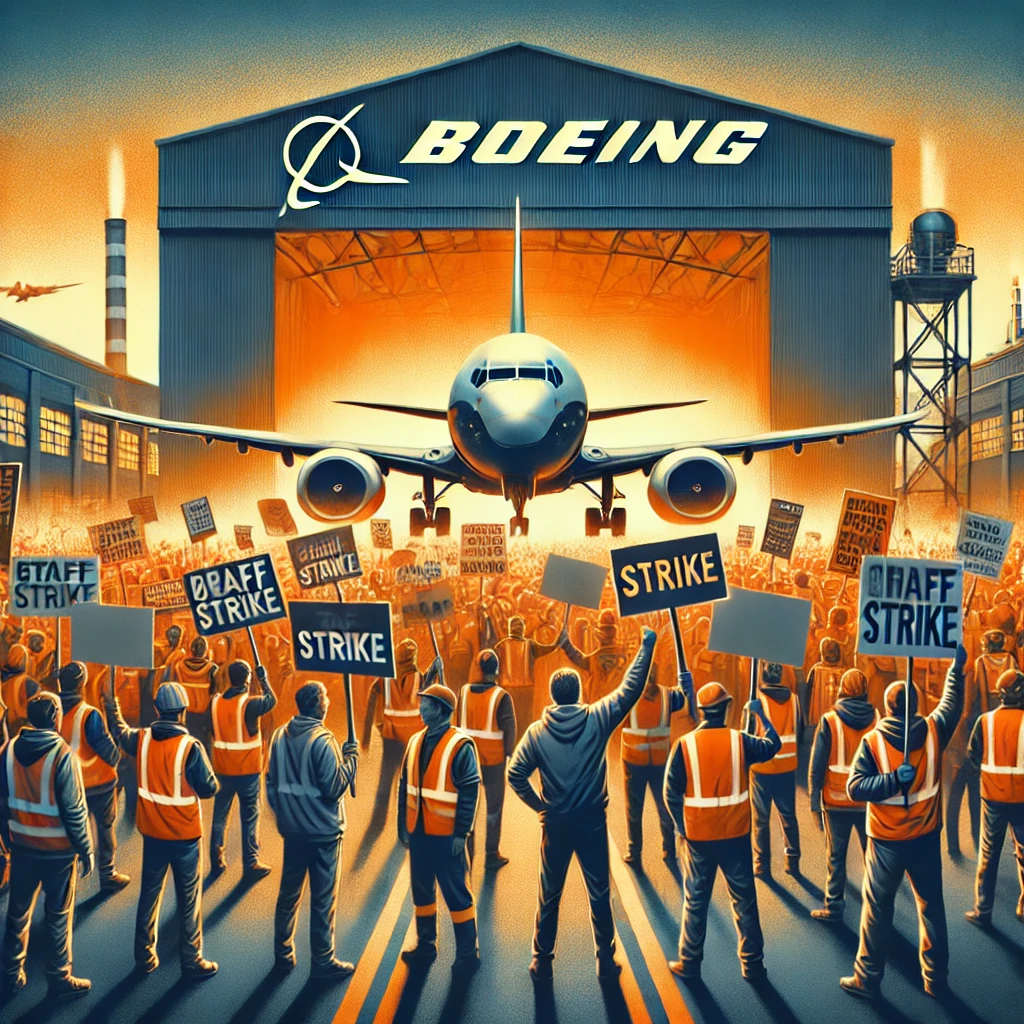Boeing, one of the largest aircraft manufacturers in the world, is facing an unprecedented crisis due to a series of financial setbacks, workforce reductions, and an ongoing machinist strike. As the company struggles to maintain its production capabilities, major operational and financial decisions are being made to help it stay afloat. In this article, we will explore how the machinist strike has affected Boeing’s production, the reasons behind its job cuts, the financial losses it is currently facing, and the key concerns that have fueled tensions between Boeing and the union.
Impact of the Machinist Strike on Boeing’s Production Capabilities
The ongoing strike by 33,000 machinists on the U.S. West Coast has taken a devastating toll on Boeing’s production capabilities. Workers involved in the strike are responsible for assembling some of Boeing’s most critical aircraft, including the 737 MAX, 767, and 777 jets. With production halted, the company has been forced to delay the first deliveries of its highly anticipated 777X jet by a year. Originally slated for 2025, the new delivery timeline has been pushed back to 2026 due to the combined effects of the strike, a flight-test pause, and earlier challenges in certification.
The disruption in production caused by the strike has stalled the company’s operations, making it impossible for Boeing to meet customer demands and maintain its revenue flow. The strike has halted key assembly lines, creating a backlog in Boeing’s already strained delivery schedule. Each passing day adds to the financial pressure as Boeing loses an estimated $1 billion per month due to the strike. The strike’s impact extends beyond current production lines to future projects, as Boeing struggles to resume operations while dealing with unresolved tensions with the union.
Reasons Behind Boeing’s Recent Job Cuts
In an effort to manage the financial strain caused by the ongoing strike and other internal challenges, Boeing recently announced plans to cut 17,000 jobs, representing approximately 10% of its total workforce. The layoffs include employees at various levels, from executives and managers to production workers. According to Boeing CEO Kelly Ortberg, these reductions are necessary to “align with our financial reality” as the company grapples with declining revenues and increasing losses.
The job cuts are a reflection of Boeing’s need to streamline its operations and refocus on key priorities. With production halted and its defense and commercial plane programs under immense pressure, Boeing is forced to make tough decisions to stabilize the company. Ortberg’s message to employees emphasized that these workforce reductions are part of a broader restructuring effort, aimed at helping Boeing weather its financial challenges and refocus on future goals, including the delayed 777X project.
The decision to reduce staff is also influenced by the broader economic environment. Demand for new aircraft has softened in recent months, putting additional pressure on Boeing’s revenue streams. As a result, Boeing has had to reduce its production targets, which means it requires fewer employees to manage its scaled-down operations.
Significance of Boeing’s Financial Losses
Boeing is currently facing massive financial losses, which have been exacerbated by the ongoing machinist strike. The company expects to report third-quarter losses of $5 billion, driven largely by production delays and increased costs in its defense business and commercial plane programs. CEO Kelly Ortberg has indicated that Boeing is losing more than $1 billion each month due to the strike, a financial burden that is difficult to sustain for any company, let alone one that has already faced other challenges.
Boeing’s total revenue is expected to drop to $17.8 billion for the quarter, with losses per share estimated at $9.97. These figures paint a grim picture of Boeing’s financial health, with the company also forecasting a negative operating cash flow of $1.3 billion. These losses have prompted credit rating agencies like S&P to warn that Boeing may soon lose its prized investment-grade rating, which would make borrowing money more expensive and further constrain its ability to recover from its current difficulties.
The impact of these financial losses goes beyond the immediate operational setbacks. The delay in the delivery of Boeing’s 777X jet, along with the need to address its labor issues, has created a negative ripple effect that could take years to reverse. As Boeing continues to report mounting losses, investor confidence has also taken a hit, with Boeing shares falling 2.12% in after-market trading following the job cut announcement.
Key Concerns Driving Tension Between Boeing and Its Union
At the heart of Boeing’s troubles lies the escalating tension between the company and the International Association of Machinists and Aerospace Workers (IAMAW), the union representing the striking workers. The primary concerns fueling the conflict include disputes over wages, benefits, and job security. Workers rejected Boeing’s previous offers, arguing that they did not adequately address their needs or provide long-term security in the face of growing uncertainties in the industry.
One of the union’s main grievances is that Boeing has failed to negotiate in good faith. The company, in turn, has filed an unfair-labor-practice charge against the union, accusing it of obstructing negotiations. This mutual distrust has led to a complete breakdown in talks, with no clear resolution in sight. Workers remain on strike, and Boeing has yet to offer a deal that satisfies the union’s demands for fair wages and improved working conditions.
Additionally, the union is concerned about the long-term viability of Boeing’s workforce. As the company implements sweeping job cuts, union members fear that the strike may further jeopardize their job security. Boeing’s decision to reduce its workforce by 17,000 employees has only heightened these concerns, as many workers worry that the company’s restructuring plan could lead to further layoffs down the line.
Conclusion
Boeing’s current crisis is a complex web of production disruptions, financial losses, and labor disputes. The machinist strike has crippled Boeing’s ability to meet its production goals, forcing the company to delay critical projects and lose billions of dollars in the process. In response, Boeing has announced significant job cuts in an effort to align with its financial reality and reduce costs. However, these cuts have added fuel to the fire, intensifying the ongoing tensions between Boeing and the machinists’ union.
As Boeing navigates these turbulent times, the company’s future remains uncertain. With its financial losses mounting and labor issues unresolved, Boeing faces an uphill battle to regain its footing in the industry. Reaching a deal with the union and resuming production is critical to Boeing’s recovery, but the road ahead is fraught with challenges. For now, the company must balance its immediate financial needs with the long-term goal of rebuilding its relationships with both its employees and its customers.

